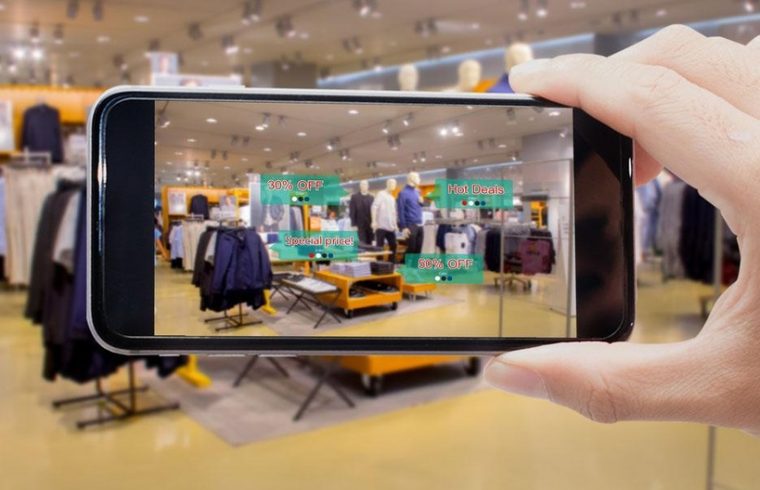Over the years, e-commerce has definitely evolved. From the early attempts of business to go online when the Internet was launched, to the dot-com collapse of 2000, up to its resurgence, and up to now that it’s flourishing all over the world, e-commerce has improved a lot.
E-commerce is an innovation and nothing is stopping it from evolving. As we move forward to a smarter, more technology-driven future, it is certain that e-commerce will stay, and will continue to develop further.
One of the technologies that are seen to revolutionize e-commerce in the near term is augmented reality. E-commerce’s biggest shortfalls are the lack of experience for its customers. With augmented reality, this might just change.
What Augmented Reality Means for Mobile Shopping
It’s not new that a bigger chunk of e-commerce activity is going on in handheld devices as compared to desktop computers. The direction of e-commerce is seen to be going the direction of mobile as people are more on-the-go. But don’t take out desktop e-commerce yet as it still plays an integral role.
Augmented reality generally appeals to two factors in mobile e-commerce: intent and mobile friction.
Intent
While it is true that mobile e-commerce is growing, it’s, particularly for a specific intent. Shoppers who are on mobile typically do it for browsing through product catalogues. Mobile is growing because it allows users to do their shopping activities while commuting, while hanging out, while on the bed, basically anywhere and anytime.
But the consummation of the sale doesn’t typically happen on mobile. Shoppers usually make their sale through desktop computers after having browsed through their mobile.
With the main purpose of mobile e-commerce being virtual window shopping, augmented reality with the help of artificial intelligence can provide a more engaging way to browse through various products to shoppers. This helps provide a more engaging experience to shoppers as compared to just going through simple product pages Furthermore, augmented reality consumer electronics are being developed more for mobile than for computers.
Mobile Friction
The mobile experience for e-commerce is nowhere near perfect yet. Admit it, even websites that do not act as sales platforms have a long way to go. Even Google knows this, and that’s why it’s urging business to do their best to make their sites compatible with mobile.
The reality is, handheld devices have limited hardware which means there is a smaller screen, there is often a slower load speed, and that it is a bit challenging to input information. All these contribute to why mobile is for browsing more than anything. Augmented reality tries to address these issues.
Through augmented reality, the possibility is endless and accessibility of e-commerce through mobile devices can surely improve.
Real-World Benefits of Augmented Reality
Augmented reality is here to reshape e-commerce for everyone and across all platforms. The following are some of the benefits that AR can help provide:
Shopping Support
Augmented reality can help provide shoppers with informed purchase decisions. AR can allow business to offer its customers ways to virtually try out their products, helping them choose which one is best.
One representation for this is when you go to the beauty section of malls, you can see women trying on various products to find which one they’ll buy. This is something you currently cannot do with online shopping. But with AR, this can just be a possibility.
And e-commerce businesses might also just think of providing yours with a virtual salesperson that will assist you while your e-shop.
Customized Shopping
Augmented reality may be able to personalize your shopping experience with your interests. AR can help provide a virtual shop of the things you often buy.
Moreover, AR can make it easy to change dimensions and colours of the products you’re looking at to help you find which one is best for you.
Integration of real objects and projected images
Augmented reality has the ability to integrate real objects to projected images. There are shops that allow you to try out a basic product in person, but you can then change to your liking with the use of AR.
For example, there’s not much need any more to put in various designs of the same bed or couch in a store. You can put in just one and then the shopper can personalize it with the use of AR to the look he or she desires. She would be able to feel the product and see the one she prefers.
Some clothing companies also do this, helping them save upon the need to display so many clothes in different sizes and designs.
The Future of E-Commerce Can Be Seen Through AR
Augmented reality presents limitless possibilities for e-commerce. At the very least, it can resolve the lack of experience of online shopping, as well as the physical limitations of mobile e-commerce.
It’s not a question of whether AR will re-shape e-commerce. It’s a question of how brilliant the changes can be. AR is coming and it really will reshape e-commerce.
Image Credit: panuwat phimpha/Shutterstock
Article Author: Juliette Anderson
Outreach Community Specialist Juliette Anderson is dedicated to educating businesses in e-commerce fulfilment. Equipped with knowledge from managing several ecommerce companies for four years, she knows how important it is for businesses to understand ecommerce logistics and demand.










